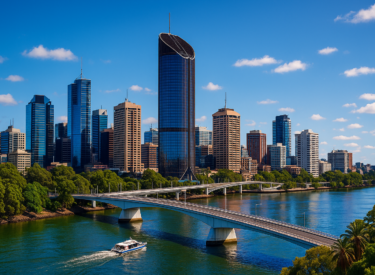
Key takeaways
In the 2024 financial year, Australia built 62,000 fewer homes than needed—an improvement from the previous year’s 110,000 shortfall, but still insufficient.
The improvement wasn’t due to more construction but rather slower population growth, which is not a sustainable solution.
Despite government promises, dwelling approvals are sluggish, meaning future supply will remain constrained.
Construction isn’t keeping up, leading to an ongoing housing undersupply in many regions.
Australia is in the midst of a housing crisis, and the numbers don’t lie, our housing supply simply isn’t keeping up with our booming population.
Over the 2024 financial year, we built 62,000 fewer homes than we needed, according to PropTrack.
And while that’s an improvement from the previous year’s 110,000-home shortfall, it’s hardly cause for celebration.
You see...the improvement wasn’t due to a surge in construction but rather a slowdown in population growth.
And that’s a problem because approvals for new homes remain weak, meaning we’re not building anywhere near what’s required to fill the gaps of the past few years, let alone future demand.
So, what does this mean for investors, homebuyers, and renters?
We’re building, but not fast enough
According to PropTrack's data, over the year ending June 2024, Australia’s population grew by 552,000 people, a drop from the previous year’s 638,400.
Anne Flaherty, Senior Economist at PropTrack said that "even with this slowdown, we only built 72% of the homes needed to keep up, and that’s a nationwide average."

In fact, in some states, the situation is far worse:
- Western Australia is the worst hit, with only 48% of the necessary new homes completed. That’s an improvement from last year’s 36%, but it’s still less than half the required amount.
- Queensland and the Northern Territory also struggled, building just 61% and 56% of the homes needed, respectively.
- New South Wales and Victoria fared better, with 74% and 82% of the required homes built.
- Tasmania and the ACT? No problems there—new construction actually exceeded population growth.
She further said:
"With supply falling so far behind, it’s no surprise that property prices in undersupplied markets are skyrocketing, particularly in Perth, which has seen some of the strongest price growth in the country."
What’s driving the housing shortage?
According to Ms Flaherty, the shortfall is being driven by a combination of factors:
- Not Enough Approvals – Even though governments talk about boosting supply, dwelling approvals remain sluggish. The pipeline of new homes isn’t strong enough to catch up with demand.
- Labour and Material Shortages – The construction industry is still battling rising costs, supply chain disruptions, and a shortage of skilled workers, making it difficult to ramp up development.
- Demolitions Eat Into Supply – It’s not just about how many homes we build—around 10% of existing homes are demolished each year, meaning we need even more construction just to stay level.
- High Interest Rates – Elevated borrowing costs have made it harder for developers to fund new projects, causing delays and cancellations.
What this means for investors
For property investors, this ongoing undersupply is a massive tailwind for capital growth and rental returns:
- Rents will continue to rise – With demand outpacing supply, rental vacancies are at record lows, and tenants are struggling to find homes. This puts upward pressure on rents, benefiting landlords.
- Property prices will keep climbing – In markets where supply is tight (like WA and Queensland), competition among buyers is fierce, pushing prices higher. If you own property in these areas, you’re in a strong position.
- New builds remain lucrative but challenging – Developers will benefit from high demand, but cost pressures and slow approvals mean projects take longer to complete
The Bottom Line
Australia’s housing shortage isn’t going away anytime soon.
While population growth may moderate in the years ahead, we haven’t built enough homes to meet demand, and approvals remain sluggish.
That means property prices and rents are likely to keep rising, particularly in supply-strained markets like WA and QLD.
For investors, this presents both challenges and opportunities.
While affordability concerns may limit some buyers, those who own the right assets in the right locations will continue to see strong returns.
As I always say, the key is strategic investing and with the right approach, this housing crisis could work in your favour.














